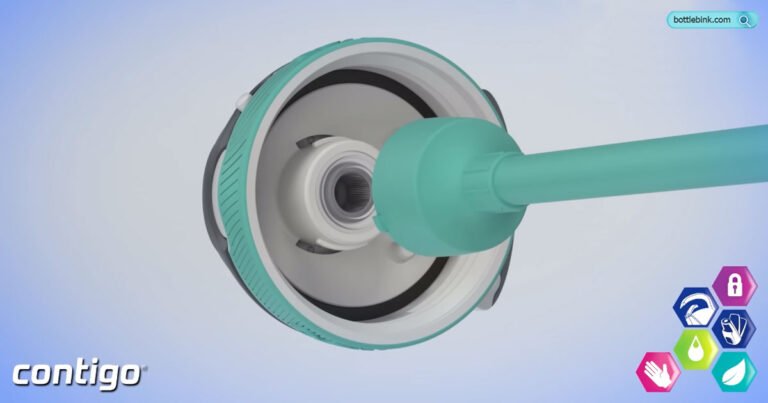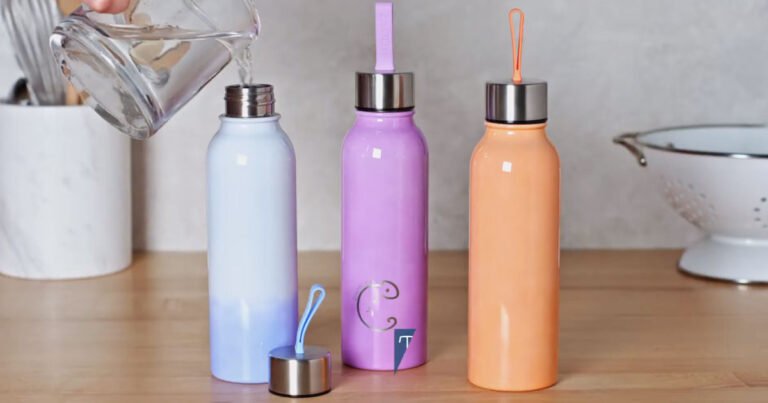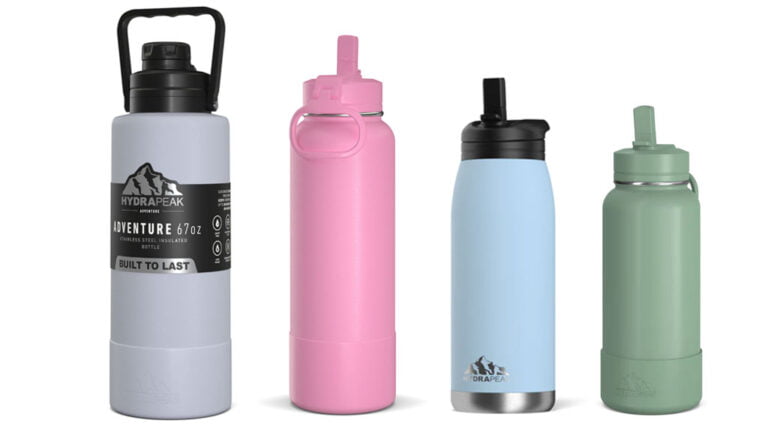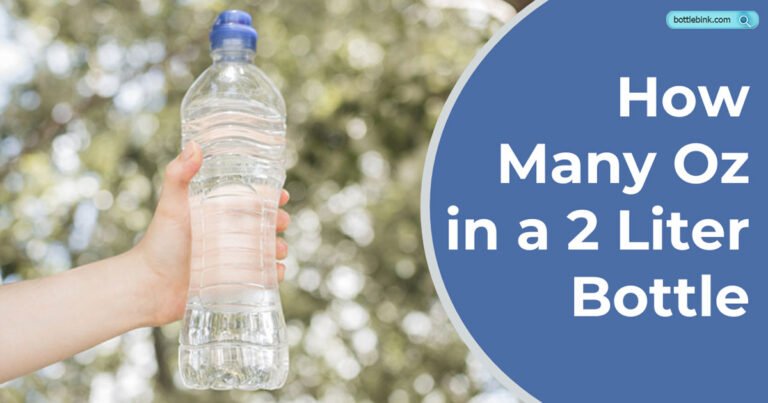How to Sterilize Glass Bottles: Essential Tips for Cleanliness
To sterilize glass bottles, wash them with warm soapy water, rinse thoroughly, and place them in boiling water for 10 minutes. When it comes to using glass bottles for storing and preserving food or beverages, it is essential to ensure that they are properly sterilized.
This not only helps to remove any potential contaminants but also prevents the growth of harmful bacteria. We will discuss how to sterilize glass bottles effectively. By following these simple steps, you can ensure that your glass bottles are clean and safe for use in no time.
So, let’s jump right into it and learn how to sterilize glass bottles.

Credit: www.amazon.com
Why Sterilizing Glass Bottles Is Important
Sterilizing glass bottles is crucial for maintaining hygiene and safety. There are several methods to sterilize glass bottles, including boiling, using a dishwasher, or using a sterilizing solution. Proper sterilization ensures that the bottles are free from harmful bacteria and contaminants, making them safe for storing liquids or food.
Preventing Bacterial Contamination
Sterilizing glass bottles helps prevent harmful bacterial contamination and ensures safety.
Maintaining Product Freshness
Sterile bottles are essential for maintaining product freshness and quality over time.
Preparing Glass Bottles For Sterilization
Before sterilizing glass bottles, it’s crucial to ensure they are properly cleaned and prepared.
Cleaning The Bottles
Start by washing the glass bottles with hot, soapy water to remove any dirt or residue.
Use a bottle brush to scrub the insides and rim thoroughly for effective cleaning.
Removing Any Labels Or Stickers
Peel off labels or stickers from the bottles, ensuring no residue is left behind.
Use warm water and a clean cloth to wipe away any adhesive on the surface.
Rinsing The Bottles Thoroughly
Rinse the bottles under running water, ensuring all soap residue is completely removed.
Inspect each bottle to confirm they are clean and free from any particles or debris.
Methods To Sterilize Glass Bottles
When it comes to ensuring the safety and cleanliness of your glass bottles, sterilization is critical. Using the right method can help eliminate harmful bacteria and give you peace of mind. In this article, we will explore four effective ways to sterilize your glass bottles: boiling, using a dishwasher, employing a steam sterilizer, and utilizing a microwave.
Boiling
Boiling is one of the oldest and most reliable methods to sterilize glass bottles. It is a simple and cost-effective way to ensure that your bottles are bacteria-free.
To sterilize glass bottles using the boiling method, follow these steps:
- Clean the bottles thoroughly with warm water and detergent.
- Place the bottles in a large pot and ensure they are fully submerged.
- Bring the water to a rolling boil and let it continue for at least 10 minutes.
- Using tongs or oven mitts, carefully remove the bottles from the pot.
- Let the bottles air dry or use a clean, lint-free cloth to dry them.
Using A Dishwasher
If you own a dishwasher, it can be a convenient and effective way to sterilize your glass bottles. Here’s how you can do it:
- Rinse the bottles thoroughly to remove any residue or particles.
- Place the bottles in the dishwasher, making sure they are secure and won’t tip over.
- Set the dishwasher to the hottest and longest cycle.
- Allow the dishwasher to complete the cycle and let the bottles cool down before removing them.
Using A Steam Sterilizer
A steam sterilizer is a specialized device designed to eliminate bacteria and other contaminants. It provides a quick and efficient way to sterilize your glass bottles. Here are the steps to use a steam sterilizer:
- Clean the bottles with warm water and mild detergent.
- Place the bottles in the sterilizer, following the manufacturer’s instructions.
- Ensure the sterilizer is filled with the appropriate amount of water.
- Start the sterilization cycle and wait for it to complete.
- Once the cycle is finished, carefully remove the bottles and allow them to cool before using.
Using A Microwave
Using a microwave to sterilize glass bottles is a quick and convenient method. However, it is essential to follow proper safety precautions to prevent any damage to the bottles or microwave. Here’s how to do it:
- Add some water to the bottles to create steam.
- Place the bottles in the microwave, making sure they are stable and won’t tip over.
- Set the microwave to a high power level.
- Heat the bottles in short bursts, checking their temperature after each burst.
- Once the bottles are hot to the touch, carefully remove them and let them cool before using.

Credit: www.tru.earth
Boiling Glass Bottles For Sterilization
When it comes to ensuring the safety of your glass bottles, boiling them for sterilization is a simple yet effective method. This process helps to eliminate any lingering bacteria, ensuring that your bottles are safe for use in storing food, beverages, or homemade products. Here’s a step-by-step guide on how to properly sterilize your glass bottles through boiling.
Fill A Large Pot With Water
Start by filling a large pot with enough water to fully submerge the glass bottles. Make sure the pot is deep enough to allow the bottles to be completely immersed during the boiling process.
Submerge The Bottles In The Water
Gently place the glass bottles into the pot filled with water, ensuring that they are fully submerged. Avoid overcrowding the pot to guarantee that each bottle receives adequate exposure to the boiling water.
Bring The Water To A Boil
Place the pot on the stove and turn the heat to high. Wait for the water to reach a rolling boil, which is characterized by vigorous bubbling and steam rising from the surface.
Boil The Bottles For A Specific Duration
Once the water is boiling, set a timer and allow the bottles to boil for at least 10 to 15 minutes. This duration is sufficient to kill any harmful microorganisms or bacteria present within the glass bottles.
Remove The Bottles And Let Them Air Dry
After the designated boiling time, carefully remove the glass bottles from the pot using tongs or heat-resistant gloves. Place the bottles on a clean, dry surface and allow them to air dry completely before use. This step ensures that any remaining moisture evaporates, leaving the bottles sterile and ready for storage or use.
Using A Dishwasher For Glass Bottle Sterilization
Using a dishwasher for glass bottle sterilization is a convenient and effective way to ensure that your bottles are free from harmful germs and bacteria. Dishwashers are designed to reach high temperatures that can kill germs, making them suitable for sterilizing glass bottles for feeding babies or storing homemade sauces and condiments.
Load The Bottles In The Dishwasher
Before you start the sterilization process, arrange the glass bottles in the dishwasher’s bottle holders or rack. Make sure that the bottles are placed in a way that allows water to reach all parts of the bottle during the washing and sterilization cycles.
Add Dishwasher Detergent
Add the appropriate amount of dishwasher detergent to the dishwasher’s detergent dispenser. Choose a high-quality detergent that is suitable for glassware to ensure thorough cleaning and sterilization of the bottles.
Select The Right Cycle
Choose a sterilization cycle on the dishwasher, such as the “sanitize” or “sterilize” option if available. If not, select a cycle with the highest temperature setting to ensure effective sterilization of the glass bottles.
Allow The Dishwasher To Complete The Cycle
Start the dishwasher and allow it to complete the selected sterilization cycle. The high temperature and powerful jets of water will work together to eliminate any harmful bacteria or germs present on the glass bottles.
Remove The Bottles And Let Them Air Dry
After the cycle is complete, carefully remove the sterilized glass bottles from the dishwasher. Place them on a clean drying rack or towel, ensuring that they are positioned upside down to allow for thorough air drying.
Using A Steam Sterilizer For Glass Bottle Sterilization
Sterilizing glass bottles is an essential step to ensure the safety and hygiene of baby feeding equipment. Among the various methods available, using a steam sterilizer is a convenient and effective way to eliminate harmful bacteria and germs. Let’s explore the step-by-step process in using a steam sterilizer for glass bottle sterilization.
Place The Bottles In The Steam Sterilizer
Start by assembling the steam sterilizer according to the manufacturer’s instructions. Ensure that it is clean and in good working condition. Place the glass bottles upright in the sterilizer, making sure they are separated to allow steam to circulate properly. Do not overcrowd the sterilizer to ensure effective sterilization.
Set The Appropriate Temperature And Duration
Consult the steam sterilizer’s user manual to determine the recommended temperature and duration for glass bottle sterilization. Typically, a temperature of around 212°F (100°C) for 5-10 minutes is sufficient. Adjust the settings on the sterilizer accordingly, following the guidelines provided.
Start The Sterilization Process
Once the temperature and duration are set, start the sterilization process by activating the steam sterilizer. The machine will begin generating steam to create a high-temperature environment that kills bacteria and other harmful microorganisms. Ensure that the sterilizer is securely closed during the process to maintain the internal temperature.
Allow The Bottles To Cool Down
After the sterilization process is complete, give the glass bottles sufficient time to cool down before handling them. Opening the sterilizer too soon can expose the bottles to potential contamination. Follow the recommended cooling time provided by the steam sterilizer manufacturer to ensure the bottles are safe to touch.
Remove The Bottles And Let Them Air Dry
Once the bottles have cooled down, carefully remove them from the steam sterilizer. Be cautious as the bottles might still be hot. Instead of using a towel or cloth, allow the bottles to air dry naturally. Placing them on a clean and dry surface is essential to prevent recontamination. Ensure that each bottle is well spaced out for efficient drying.
By following these steps, you can effectively sterilize glass bottles using a steam sterilizer. It is important to prioritize hygiene and cleanliness when it comes to baby feeding equipment, and a steam sterilizer provides a convenient solution that gives you peace of mind.
Using A Microwave For Glass Bottle Sterilization
When it comes to sterilizing glass bottles quickly and efficiently, using a microwave can be a game-changer. Here is a step-by-step guide to properly sterilizing glass bottles using a microwave.
Pour Water Into The Bottles
Start by pouring water into each glass bottle, making sure to fill them about halfway full. This will help create steam to sterilize the bottles effectively.
Place The Bottles In The Microwave
Carefully place the water-filled glass bottles in the microwave. Make sure to space them out evenly to allow for thorough sterilization.
Microwave The Bottles For A Specific Duration
Set the microwave to high power and microwave the bottles for approximately 2-3 minutes. This will help kill any bacteria or germs present in the bottles.
Remove The Bottles With Caution
Use oven mitts or a towel to carefully remove the hot glass bottles from the microwave. Be cautious as the bottles will be hot to touch.
Let The Bottles Cool Down And Air Dry
Allow the glass bottles to cool down to room temperature before handling them further. After cooling, let the bottles air dry completely before using them for storage or feeding.
Tips For Properly Storing Sterilized Glass Bottles
Store the bottles in a clean and dry area
- Choose a clean and dry storage area for glass bottles after sterilization.
- Avoid places with high humidity to prevent the growth of mold or bacteria.
- Maintain proper ventilation to keep the bottles free from moisture buildup.
Cover the bottles to prevent dust or debris
- Use a clean cloth or paper towel to cover the sterilized glass bottles.
- Secure the covering with a rubber band or airtight lid to keep out dust and debris.
- Ensure the covering is not too tight to allow air circulation and prevent condensation.
- Handle sterilized glass bottles by the exterior surface to prevent contamination.
- Avoid touching the inside of the bottles with your fingers or any objects.
- Use clean gloves if necessary to avoid direct contact with the interior of the bottles.
- Check the glass bottles regularly for cracks, chips, or other imperfections.
- Discard any damaged bottles to prevent potential hazards during usage.
- Ensure each sterilized glass bottle is in good condition before using it for storage.
:strip_icc()/cleaning-products-tools-best-homemade-window-cleaner-01-b58b07400a334c818193bd0b90bcba62.jpg)
Credit: www.bhg.com
FAQs For How To Sterilize Glass Bottles
How Can I Sterilize Glass Bottles At Home?
To sterilize glass bottles at home, first wash them with soapy water, rinse thoroughly, then sterilize by boiling in water for 10 minutes. Alternatively, use a dishwasher with a sterilization setting. Allow bottles to air dry before use.
Can I Sterilize Glass Baby Bottles In The Microwave?
Yes, you can sterilize glass baby bottles in the microwave. Ensure the bottles are microwave-safe, wash and rinse them, then place in a microwave sterilizer or microwave-safe container with water and heat according to the manufacturer’s instructions.
What Are The Best Sterilization Methods For Glass Bottles?
The best sterilization methods for glass bottles include boiling, steaming, or using a dishwasher with a sterilization setting. These methods effectively kill bacteria and ensure the bottles are safe for use.
Is It Necessary To Sterilize Glass Bottles Before Use?
Yes, it is necessary to sterilize glass bottles before use, especially for babies or when storing beverages. Sterilization helps eliminate harmful bacteria, ensuring the bottles are safe and hygienic for use.
Conclusion
Sterilizing glass bottles is an essential step to ensure the safety and cleanliness of your stored goods. Using the methods discussed in this guide, you can easily and effectively sterilize your glass bottles at home. Remember to follow the proper steps, such as washing, boiling, or using chemical solutions, to achieve optimal results.
By incorporating these techniques into your routine, you can maintain the hygiene and quality of your glass bottles, keeping your stored items fresh and protected.






